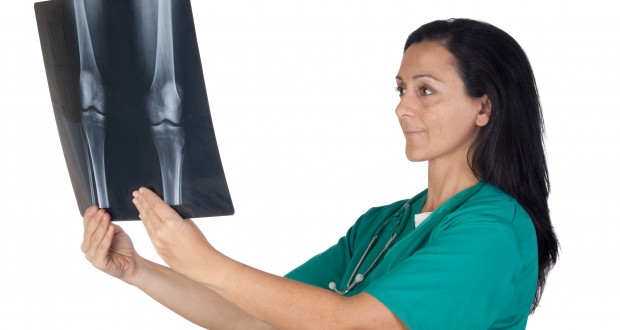By: Red Hot Mamas
Published: August 12, 2014
Contributed by Dr. Verna Brooks Mckenzie, Red Hot Mamas® Medical Expert
Osteoporosis, otherwise called brittle bone disease, is a disorder of the skeleton characterized by compromised bone strength which predisposes to an increased risk of fracture. There is deterioration in the micro architectural structure of the bone resulting in low bone density and poor bone quality. The disease is especially prevalent among older postmenopausal women. It is an under recognized disease affecting over 200 million people worldwide. It is estimated that 40% of postmenopausal women will have an osteoporotic fracture in their lifetime.
The World Health Organization’s definition of osteoporosis is a postmenopausal woman or a male over the age of 50 years who has a bone mineral density (BMD) T-score greater than or equal to -2.5 at the total hip, femoral neck or lumbar spine. The clinical diagnosis of osteoporosis is a fragility fracture.
Normal T-score: greater than or equal to -1-0
Low bone mass: -1.0 to -2.3
Osteoporosis: less than or equal to -2.5
Peak bone mass is usually reached at age 30 years.
Bone loss begins at that time and is greater at menopause. 30% of peak bone mass is lost by age 80 years.
Osteoporosis is also called the silent robber because there are usually no early warning signs and often the first presentation is a fracture. Vertebral fractures often occur without a fall, are sometimes painless and can lead to marked height loss, a sign of compression fracture.
Primary osteoporosis is due to aging, secondary osteoporosis can be the result of taking certain medications such as glucocorticoid and diseases such as mal absorption, multiple myeloma, hyperthyroid, type 1 diabetes, rheumatoid arthritis, hypogonadism (low testosterone) in men.
Risk Factors:
- Low bone density
- Advanced age and genetics
- Low calcium and Vitamin D intake
- Parents with a history of hip fracture
- Thinness
- Current smoking
- Excess alcohol intake
- Menopause status
The National Osteoporosis Foundation recommends BMD Testing for the following:
- Postmenopausal women age 65 years and older
- Postmenopausal women less than age 65 years with risk factors
- Breaking a bone after age 50 years
- Women of menopausal age with risk factors
- Men age 70 years or older
- Men age 50-69 years with risk factors
Osteoporosis Management:
- Maintain a healthy weight
- Adequate Calcium (1200mg/day) and Vitamin D3 (800-1000IU/day)
- Weight bearing exercise – bones and muscles work against gravity (walking, climbing stairs, weight training, jogging, using resistance machines)
- Avoid smoking
- Decrease alcohol intake
- Treat underlying medical conditions that affect bone health
Treatment is prescribed to decrease the risk of fracture.
FRAX is an online fracture risk assessment tool that calculates a person’s absolute fracture risk or an estimate of the chance of breaking a bone in the next 10 years. This tool can assist with decisions on when to treat. Discuss this with your doctor.
 Red Hot Mamas In Charge of Change.
Red Hot Mamas In Charge of Change.




